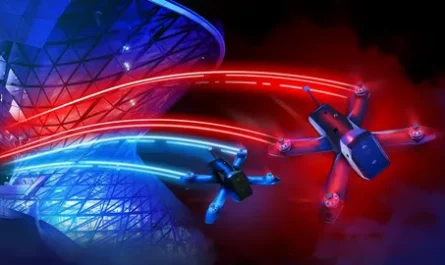Radomes are structures designed to protect radar transceivers or antenna installations from weather while remaining transparent to radio waves. They play a significant role in functioning of airborne early warning and control (AEW&C) systems and airborne surveillance radars used by air forces worldwide. The global aircraft radome market encompasses radomes designed for various military and commercial aircrafts such as fighter jets, transport aircraft, cargo planes, and helicopters. Some key applications of aerospace radomes include fire control radars, airborne ground surveillance radars, weather radars, and crash avoidance radars.
The global Aircraft Radome Market is estimated to be valued at US$ 738.09 Mn in 2024 and is expected to exhibit a CAGR of 5.7% over the forecast period 2024 to 2031, as highlighted in a new report published by Coherent Market Insights.
Market Dynamics
Rising Military Air Combat Operations: The growing geo-political conflicts and rising defense budgets of major economies are fueling the procurement of advanced military aircrafts by armed forces worldwide. This is expected to drive the demand for radomes equipped with state-of-the-art airborne radars for fighter jets, AWACS, and other combat aircraft, thus propelling the growth of global aircraft radome market over the forecast period.
Radar Technology Advancements: Continuous innovation in radar technologies and development of modern multimode, active electronically scanned array (AESA) radars is promoting the demand for more efficient and lighter aerospace radomes. Manufacturers are investing in R&D to develop radomes made with advanced materials such as metallic and dielectric composites, which offer better electromagnetic wave transparency, mechanical strength, low radar cross-section (RCS), and resistance to environmental factors. These advancements are augmenting the adoption of radomes in military as well as commercial aviation sectors.
Segment Analysis
The aircraft radome market is dominated by the commercial aircraft segment. Over 60% of the total radome demand comes from commercial aircrafts used in civil aviation. With increasing air passenger traffic globally as well as demand for newer and more fuel-efficient aircraft, the OEM segment is expected to remain the key end-user industry for radome producers over the forecast period.
PEST Analysis
Political: The aircraft radome industry is significantly influenced by government policies and regulations related to aviation safety standards. Strict rules regarding aircraft component certification impact industry dynamics.
Economic: Factors such as global GDP growth, cross-border travel and trade directly influence the demand from airlines and aircraft OEMs. Overall economic conditions determine fleet expansion plans of airliners.
Social: Rising living standards and disposable income has boosted airline travel across regions. This increases the demand for new aircraft and replacement of existing fleets driving radome market growth.
Technological: Continuous technological advancements in materials, aerodynamics and radome design help achieve lighter weight, high strength and electromagnetic compatibility. This allows aircraft to fly faster and manoeuvre efficiently.
Key Takeaways
The global Aircraft Radome Market Size was valued at US$ 738.09 Mn in 2024 and is expected to reach over US$ 1,250 Mn by 2031, expanding at a CAGR of 5.7% during the forecast period.
North America remains the largest market for aircraft radomes driven by high demand from commercial aviation as well as military aircraft fleet. Major aircraft manufacturers based in the US such as Boeing and Lockheed Martin generate consistent radome requirements.
Key players operating in the aircraft radome market are Scotts Miracle-Gro Company, National Fertilizers Ltd., and Fertikal N.V. Scotts Miracle-Gro has a wide product range serving both commercial as well as defense radome needs. National Fertilizers focuses on composites for smaller aircraft and helicopters.
*Note:
1. Source: Coherent Market Insights, Public sources, Desk research
2. We have leveraged AI tools to mine information and compile it



